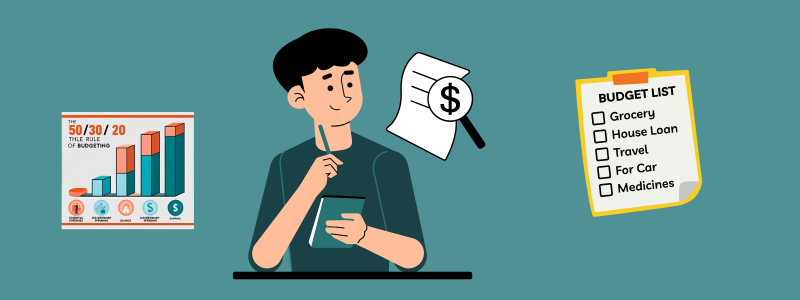Does your paycheck vanish before the month ends? You’re not alone. Managing personal finances can feel overwhelming, but with the right approach, you can take control of your money. Personal finance management isn’t just about budgeting; it’s about making informed decisions that secure your financial future. In this guide, we’ll walk you through essential steps—from tracking expenses to investing wisely—so you can achieve financial stability and peace of mind.
Table of Contents
Step 1: Track Your Income & Expenses
The first step in financial management is understanding where your money goes.
How to Track Your Spending:
- Use budgeting apps like Mint, YNAB, or a simple Excel spreadsheet.
- Follow the 50/30/20 rule: 50% for needs, 30% for wants, 20% for savings and debt.
- Review your bank statements and identify unnecessary expenses.

Example: Sarah realized she was spending $200 a month on coffee and dining out. By tracking expenses, she cut this by 30% and redirected the savings to her emergency fund.
Step 2: Create a Realistic Budget
A budget isn’t a punishment; it’s a roadmap to financial freedom.
Tips for Budgeting Success:
- Categorize expenses into essentials (rent, bills, groceries) and non-essentials (eating out, subscriptions).
- Set a weekly spending limit and stick to it.
- Use cash for discretionary spending to avoid impulse purchases.
Step 3: Build an Emergency Fund
Life is unpredictable. Having an emergency fund prevents financial setbacks.
How Much to Save:
- Aim for 3–6 months’ worth of living expenses.
- Start small: Even $20 a week adds up.
- Keep your emergency fund in a high-yield savings account.
Step 4: Tackle Debt Strategically
Debt can drain your finances, so it’s essential to have a plan.
Two Proven Methods:
- Avalanche Method: Pay off high-interest debt first (credit cards).
- Snowball Method: Pay off the smallest debt first for motivation.
Example: John had five debts. Using the snowball method, he paid off his smallest loan in three months, which kept him motivated to tackle the rest.
Step 5: Start Investing Early
Investing helps your money grow over time.
Investment Basics for Beginners:
- Start with index funds—they offer diversification with low fees.
- Take advantage of employer-sponsored retirement plans (like a 401(k)).
- Understand compound interest: The earlier you start, the more your money grows.
Example: Investing just $100/month at a 7% return could grow to over $120,000 in 30 years.
Step 6: Monitor & Adjust Your Finances
Your financial situation will change over time, so regular reviews are key.
How to Stay on Track:
- Review your budget quarterly and adjust as needed.
- Automate bill payments and savings contributions.
- Set financial goals and track progress.
Common Mistakes to Avoid
- Emotional spending: Buying on impulse rather than necessity.
- Ignoring your credit score: A low score affects loan approvals and interest rates.
- Skipping insurance: Health and life insurance protect you from financial ruin.
Conclusion
Managing your money doesn’t have to be stressful. By tracking your expenses, budgeting wisely, saving for emergencies, reducing debt, and investing early, you’ll set yourself up for financial success. Start today—your future self will thank you!

